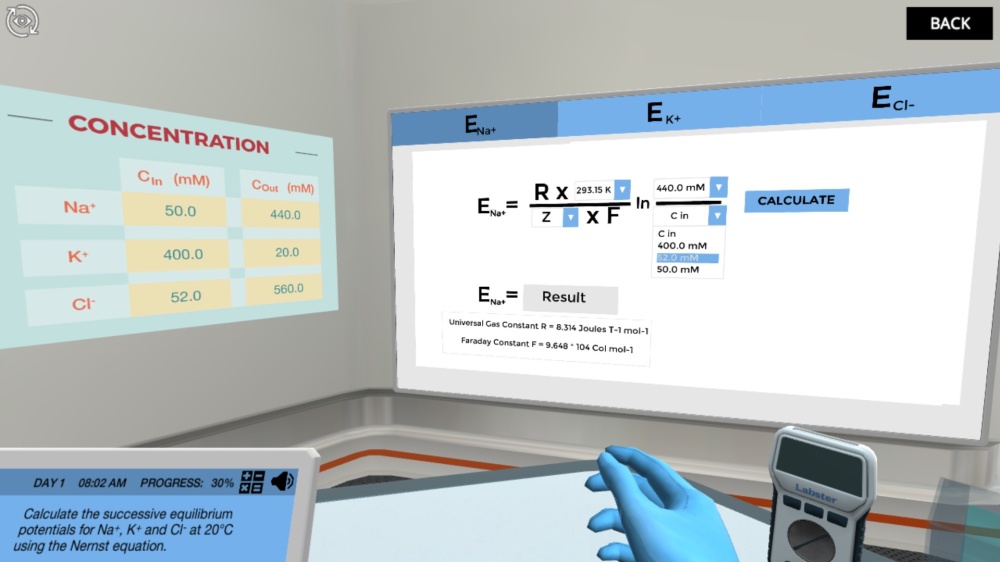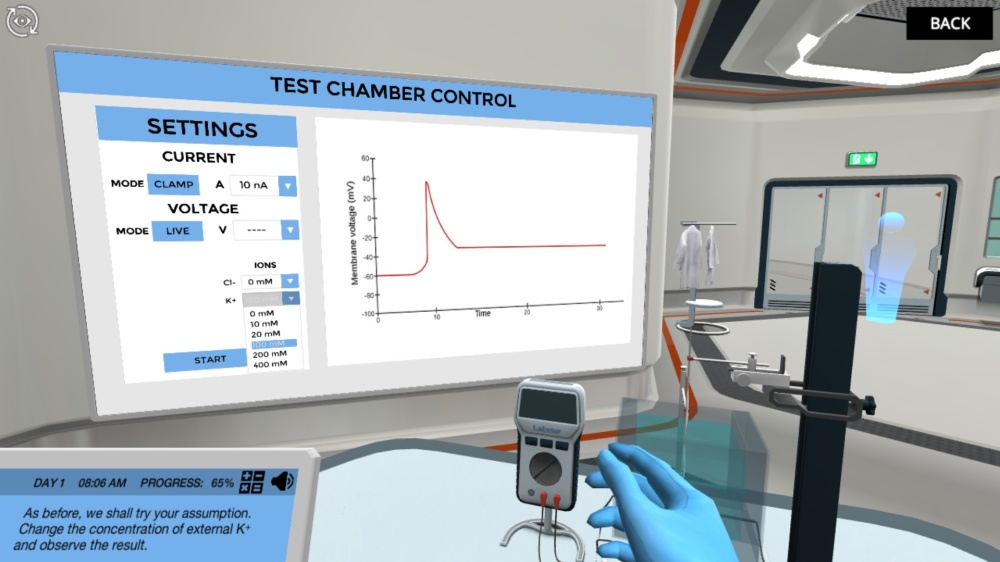Action Potential Lab: Experiment with a squid neuron Virtual Lab
Dissect a squid and use its giant neuron to witness the propagation of information in the shape of an action potential created by an electric current. Use this information to identify a neurotoxin affecting a hospitalized patient.

Try Labster's 30-Day All-Access Trial for Free
Discover one of our 200+ simulations today
- Description
- Features
About the Action Potential Lab: Experiment with a squid neuron Virtual Lab
Did you know that nerve cells propagate an electric signal along their own membrane to transfer information? They are called action potentials, and in this simulation you will use a squid’s giant neuron to learn about the molecular mechanisms behind this phenomenon. You will learn to recognize the typical shape of an action potential, but also to describe the driving forces behind each of its different phases.
Identify a neurotoxin from its effect on a nerve
In this simulation your mission is to help out a hospital who just received a patient with severe food poisoning. A sample from the patient has revealed the presence of a neurotoxin, and they need you to identify it as soon as possible. To find out how, you will first dissect a giant squid to extract the neuron to use as a model, and then study the neuron membrane with electric currents. Once you understand how action potential works on the membrane of a neuron, you will compare the effect of existing neurotoxins with your sample for identification.
Observe and test a neuron with electric currents
To study the axon of a nerve, you will reproduce the historically famous experiment of Dr Hodgkin and Dr Huxley, which was rewarded with a Nobel Prize, by setting the neuron in a test chamber to trigger action potentials with electric currents. You will learn about ion flows and calculate the resulting membrane equilibrium and membrane potential. Using the current clamp and voltage clamp techniques, you will identify the mechanisms behind each stage of an action potential. Once you have a good grasp of the concept of membrane potentials, you will be transported inside an axon to define the precise chain of actions leading to an action potential. Finally, you will test three different neurotoxins and analyze their effects on action potentials to deduce their most probable mode of action.
识别的神经毒素的方式行动
To uncover which neurotoxin affects the hospitalized patient, you will have to compare its effect on the neuron’s action potential with three other drugs, and come up with a hypothesis about how it deregulates the neuron’s ability to transmit a signal.
Will you be able to help out the sick patient?
Dissect a squid and use its giant neuron to witness the propagation of information in the shape of an action potential created by an electric current. Use this information to identify a neurotoxin affecting a hospitalized patient.
At the end of this simulation, you will be able to...
- Calculate membrane equilibriums and membrane potential using the Nernst equation
- Learn the ionic and electrical characteristics of each phase of an action potential.
- Understand the role voltage-gated channels play in determining the shape of an action potential
- Measure the resting membrane potential and then observe an action potential.
- Record membrane current under voltage clamp
- Record membrane voltage under current clamp at different concentrations of extracellular sodium and potassium
- Observe the shape of action potentials when the neuron is exposed to different ion channel blockers
Length: 50 Minutes
Accessibility mode: Available
Languages: English (United States), German, French, Spanish
No direct alignment
No direct alignment
No direct alignment




